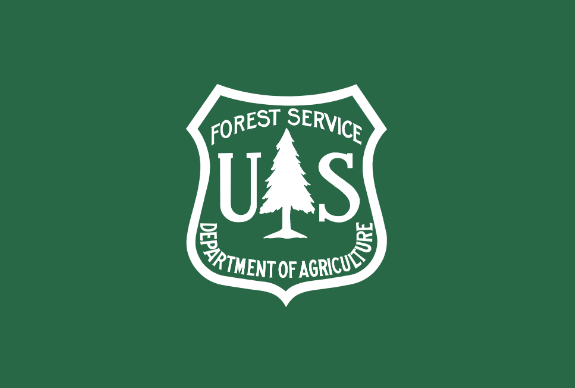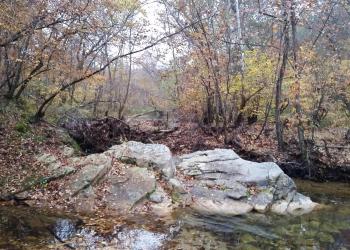Paddy Creek Wilderness
Wilderness recreation is a unique experience that requires special skills and techniques, such as no-trace camping, to ensure that the character of the land truly remains wild. Emphasis in a wilderness area is on the primitive. Signing and trail marking will be minimal; developed campsites, footbridges, and garbage collection are non-existent. A wilderness is a special area set aside by Congress which “generally appears to have been affected primarily by the forces of nature with the imprint of man’s work substantially unnoticeable…” Before you start, be prepared with adequate supplies; water sources with the wilderness are not recommended for drinking, and must be purified if used. Group size is limited to 10 persons.
This 7035-acre wilderness is located in northwestern Texas County. In the early 1800’s Sylvester Paddy began the first logging of the area, transporting timber from this area by river to St. Louis. Until the 1930’s the area was homesteaded and grazed as open range. It became federally designated wilderness in 1983.
Big Paddy and Little Paddy Creeks characterize the Paddy Creek Wilderness with steep cliffs and rock outcrops along the drainages. These creeks have water in them throughout most of the year. In the Wilderness are a few old fields in drainages but the rest is forested. Black, white, and post oaks, hickories and shortleaf pine are the main trees. Throughout the area, wildlife typical of the Missouri Ozarks is present. White-tailed deer, wild turkey, squirrel, rabbit, fox, coyote and bobcat are common.
Maps
- Trail System Map available on the Avenza app.
Trails: There are 18 miles of designated trails within the wilderness. The elevation of the area changes 500 feet between a point near Roby Tower on the western edge of the area, and Paddy Creek as it meets the eastern boundary of the Wilderness. Signs and trail marking are minimal or non-existent and the use of maps and compass is recommended. Travel is by foot or on horseback; No Motorized or Mechanized vehicles are permitted.
Active Alerts
General Information
Safety Information
Wilderness has inherent dangers, and is a primitive setting where you meet nature on its own terms.
- Bring a map and compass, and first aid kit.
- During temperate months, be prepared for biting insects, poison ivy and high temperatures.
- Be advised of hunting seasons.
- Avoid using the trail during excessively wet periods.
- Be sure to tell someone your plans,
- don’t hike the wilderness alone and
- carry extra supplies so you are prepared to take care of yourself in case you get lost, injured, or delayed.
- The universal distress signal is three of anything: shots, shouts, smokes, whistles.
- Be prepared to sanitize water for drinking
Camping
Protect the solitude; seek out campsites in the Wilderness that are out of sight and sound of trails and other camps. When sharing an area keep a low profile and maintain the solitude.
Camping in the Wilderness
Dispersed camping is the term used for free camping anywhere in the National Forest OUTSIDE of a designated campground.
- Pick a Campsite and follow the Leave No Trace Principles
- Camp 100 feet away from trails and water sources.
- Treat any water found in the area before consuming it.
- Human waste (Feces) must be buried at least 6 inches deep and covered.
- Pack out all of your garbage.
Commercial use will not be permitted. Special uses will not be permitted, except for access to surrounded private property.
Forest Order 09-05-12-07: Wilderness
- Camping within 100 feet of an established trail, stream, body of water, cave, rock, shelter, other occupied campsites or other restricted camping areas.
- Building, maintaining, attending or using a fire, campfire, or stove fire within 100 feet of an established trail.
- Using a trail, campsite or other land area of the wilderness by more than 10 people at any one time or travelling as a group by more than 10 people in any area of the wilderness.
- Possessing or using a bicycle, wagon, cart, or other vehicle.
- Riding, hitching, tethering, or hobbling a horse or other saddle or pack animal in violation of posted instructions. Hitching or tethering saddle or pack animals directly to live trees is prohibited.
- Riding, hitching, tethering, or hobbling a horse or other saddle or pack animal in violation of posted instructions. Picketing horses or mules within 100 feet of water or trail is prohibited.
- Storing equipment, personal property, or supplies.
- Disposing of debris
Trail Use
Dogs are allowed on hiking trails, as long as they are kept on a leash. Unleashed dogs can pose a danger to your pet, the natural resources of the area, and other forest visitors.
- Leashes must be six feet, or shorter, when in developed recreation sites, including trails within the boundaries (36 CFR 261.16(j)) when they are not inside an enclosed vehicle or tent.
- Yield your leashed dog around other hikers and horses.
- Pack out your dogs waste or bury it 100 feet from water and trails.
Camping
- Keep dogs on a six-foot, or shorter, leash when they are not inside a tent.
- Store dog food in bear-resistant containers and feed your pet away from the campsite.
- Pick up and bag your dog’s waste. Place it in a provided trash receptacle or pack it out.
- Do not leave your dog unattended at any time.
- Do not leave your dog in the vehicle on a hot day.
- Keep your dog in your tent or vehicle at night.
- Ensure that there is ample water available for your pet.
Wildlife
- Do not allow them to interact with wildlife
Address: 108 S. Sam Houston Blvd. Houston, MO 65483
Phone: 417-967-4194
Hours: 8:00 am - 4:30 pm, Monday to Friday; District Offices closed 1 - 1:30 for lunch (Closed on federal holidays)
Office Email: sm.fs.marktwainnf@usda.gov
Facility and Amenity Information
Restrooms
Restrooms are not available at this site.
Water
Potable water is not available at this site.
Drinking water is not available in Paddy Creek Wilderness, open water sources within the wilderness are not recommended for drinking. Bring your own drinking water or be prepared to boil or treat water chemically.
Nearby Trails
Recreation Opportunities
Horseback Riding Info
There are 18 miles of designated trails within the Paddy Creek Wilderness. The elevation of the area changes 500 feet between a point near Roby Tower on the western edge of the area, and Paddy Creek as it meets the eastern boundary of the Wilderness.
Signs and trail marking are minimal or non-existent and the use of maps and compass is recommended.
Backpacking Info
There are 18 miles of designated trails within the Paddy Creek Wilderness. The elevation of the area changes 500 feet between a point near Roby Tower on the western edge of the area, and Paddy Creek as it meets the eastern boundary of the Wilderness.
Signs and trail marking are minimal or non-existent and the use of maps and compass is recommended.
Day Hikes Info
There are 18 miles of designated trails within the Paddy Creek Wilderness. The elevation of the area changes 500 feet between a point near Roby Tower on the western edge of the area, and Paddy Creek as it meets the eastern boundary of the Wilderness.
Signs and trail marking are minimal or non-existent and the use of maps and compass is recommended.





